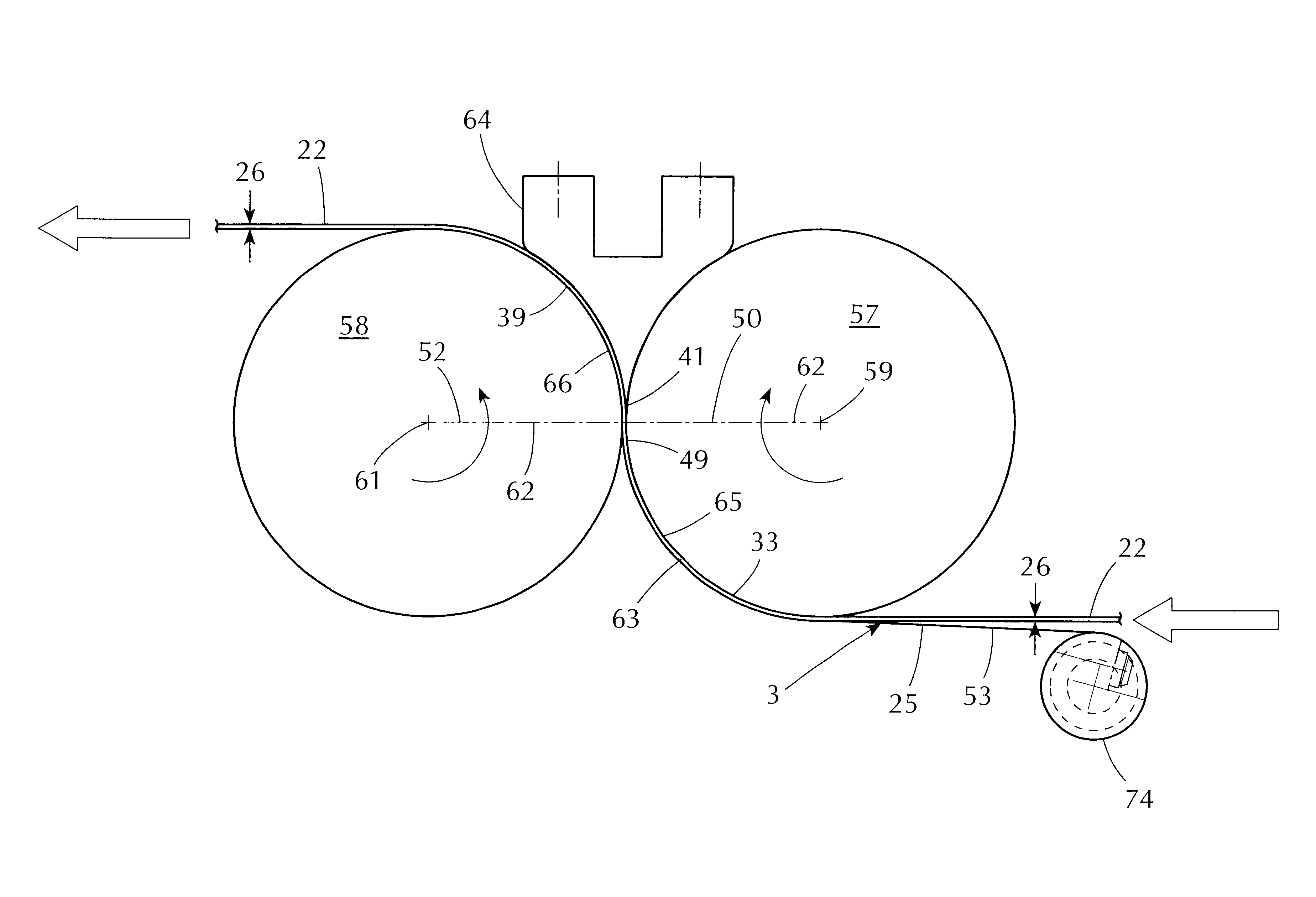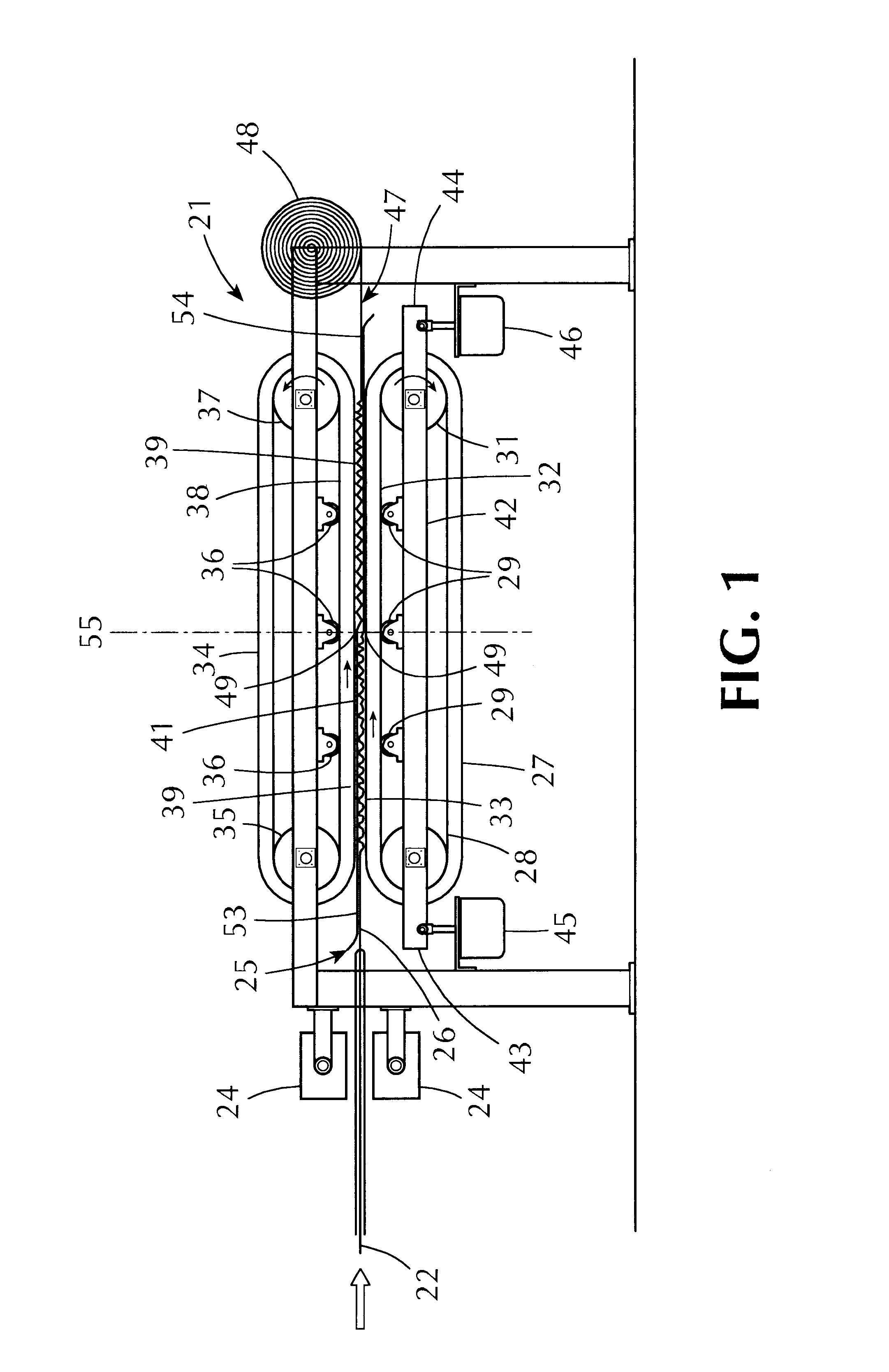Dual-slip compressive shrink-proofing apparatus for fabric and related method
a compressive and fabric technology, applied in the direction of shaping/stretching tubular fabrics, knitting, weaving, etc., can solve the problems of not being formed or requiring frequent re-adjusting of compression zones, and knitting textile fabrics, like randomly deposited fabrics, are neither formed nor structured similarly to woven textile fabrics, etc., to achieve superior-quality controlled permanent compaction
- Summary
- Abstract
- Description
- Claims
- Application Information
AI Technical Summary
Benefits of technology
Problems solved by technology
Method used
Image
Examples
Embodiment Construction
One embodiment of the present invention is shown in FIGS. 1 and 2 as a compactor generally designated 21 comprising twin endless belts. The compactor 21 treats a knitted tube of shrinkable fabric 22 delivered from a source (not shown) via a spreader 23 seen in FIG. 2. The particular fabric shown by way of an example in FIGS. 1 and 2 arrives dry so it is first heated and moistened by steam from steam chambers 24 whereby fibers of the fabric partially unravel and expand.
Entry means (generally designated 25) shown in FIGS. 1 and 2 receive a tube of the fabric 22 in a flattened double thickness onto an entry belt 27 organized for clockwise travel over an entry idler roller 28 and entry stabilizer rollers 29 by means of an entry driven roller 31. The entry belt 27 forms a straight, flat entry run 32, preferably horizontal, which presents a flat clockwise traveling entry surface 33.
Retarder means are shown in FIG. 1 as a retarder belt 34 organized for endless counterclockwise travel over ...
PUM
| Property | Measurement | Unit |
|---|---|---|
| Thickness | aaaaa | aaaaa |
| Pressure | aaaaa | aaaaa |
| Shrinkage | aaaaa | aaaaa |
Abstract
Description
Claims
Application Information
 Login to View More
Login to View More - R&D
- Intellectual Property
- Life Sciences
- Materials
- Tech Scout
- Unparalleled Data Quality
- Higher Quality Content
- 60% Fewer Hallucinations
Browse by: Latest US Patents, China's latest patents, Technical Efficacy Thesaurus, Application Domain, Technology Topic, Popular Technical Reports.
© 2025 PatSnap. All rights reserved.Legal|Privacy policy|Modern Slavery Act Transparency Statement|Sitemap|About US| Contact US: help@patsnap.com



